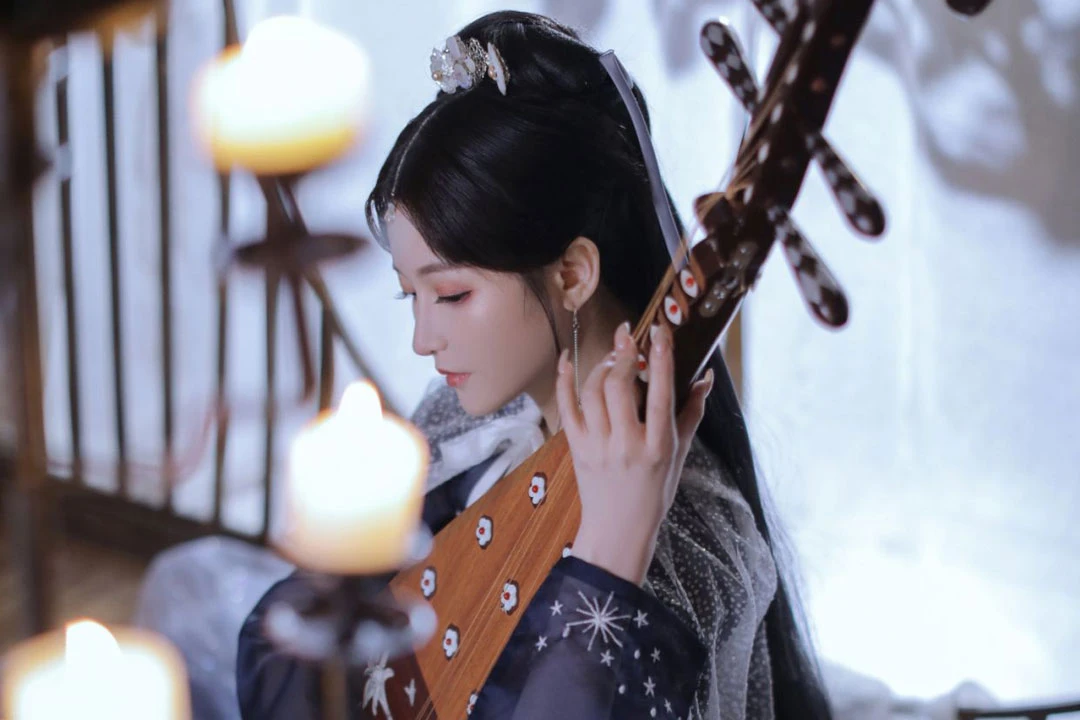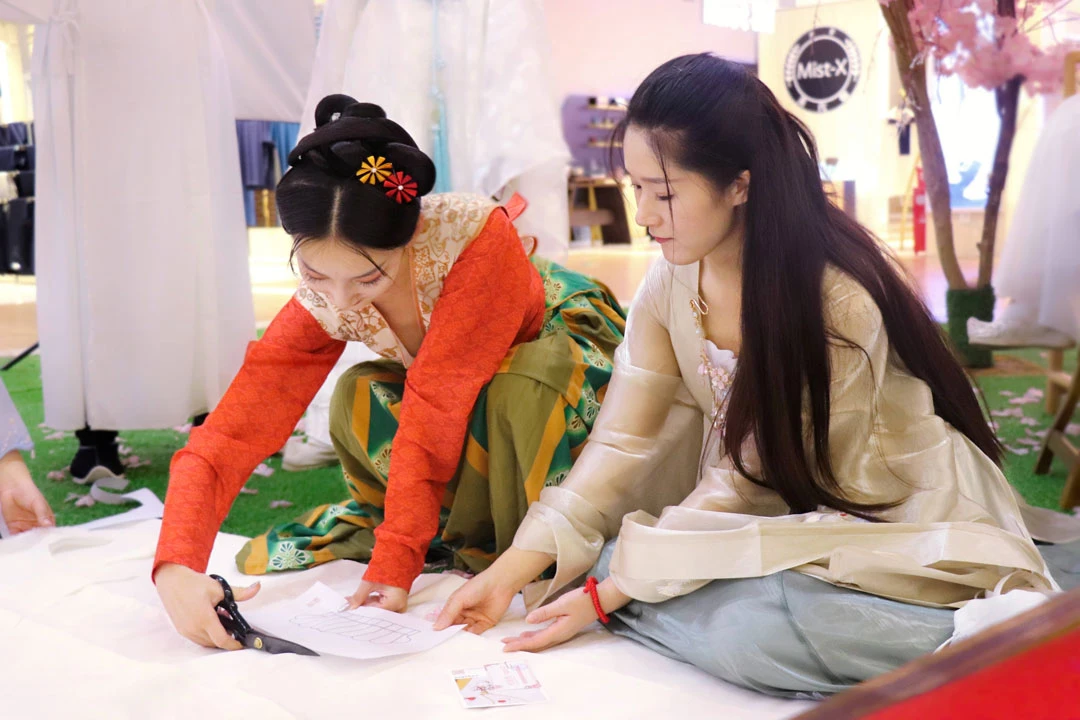Hanfu, the traditional attire of the Han Chinese, is a cultural treasure that spans thousands of years. Rich in history and symbolism, Hanfu comes in a variety of styles, each reflecting the aesthetics of different dynasties and social classes. In this comprehensive guide, we will delve into the fascinating world of Hanfu, exploring the many types available and unraveling the intricate layers that contribute to its timeless elegance.
I. Major Types of Hanfu
Ruqun (襦裙)
The Ruqun is one of the most iconic and versatile types of Hanfu. It consists of a short jacket called “Ru” and a flowing skirt known as “Qun.”
The Ruqun has been worn by both men and women throughout various dynasties and is characterized by its simple yet elegant design.
Quju (曲裾)
Originating from the Tang Dynasty, the Quju features a distinctive asymmetrical skirt that is longer in the back and shorter in the front.
This style was popularized by Tang Dynasty court dancers and has a dynamic and graceful appearance.
Beizi (褙子)
The Beizi is a long, flowing outer robe that was often worn over other layers of clothing. It became particularly popular during the Ming and Qing Dynasties. Beizi can be plain or adorned with elaborate embroidery, making it suitable for both everyday wear and formal occasions.
Shenyi (深衣)
The Shenyi is a style that emerged during the Shang and Zhou Dynasties. It features a cross-collar top with a wide, straight-cut lower garment. Shenyi is known for its loose and comfortable fit, making it a practical choice for various activities.
Zhongyi (中衣)
These two-piece ensembles consist of an upper garment (Shangyi) and a lower garment (Zhongyi). The Shangyi is typically a cross-collar jacket, while the Zhongyi can vary in style. Zhongyi and Shangyi combinations offer a range of possibilities for mixing and matching to create unique looks.
Zhiju (直裾)
A style with a straight, parallel-cut skirt that was prevalent during the Han and Wei-Jin periods. Zhiju is characterized by its simplicity and elegance.
II. The Art of Layering in Hanfu: Understanding the Intricacies
What are the different layers of Hanfu?
The traditional Hanfu ensemble is characterized by its multilayered structure, and the number of layers can vary depending on the specific type of Hanfu, the occasion, and personal preferences. Generally, a complete Hanfu outfit consists of several layers, each contributing to the overall elegance and symbolism of the attire. Here are the typical layers of a Hanfu ensemble:
Base Layer: Dahu (大褶) or Daxiushan (大袖衫)
The base layer of Hanfu often includes a Dahu, a wide-sleeved undershirt, or a Daxiushan, a robe with large, flowing sleeves.
These base layers provide a foundation for additional garments and contribute to the overall aesthetic of the outfit.
Middle Layer: Ru (襦) and Qun (裙)
The middle layer typically consists of the Ru (short jacket) and Qun (skirt) combination, forming the core of many Hanfu styles.
The Ru is often tied with a decorative sash or ribbon, adding a touch of flair to the ensemble.
Outer Layer: Beizi (褙子) and Other Overgarments
The outer layer varies depending on the specific Hanfu style. The Beizi, a long outer robe, is a common choice, especially for formal occasions.
Other overgarments, such as capes or sleeveless robes, may be added for additional layers of complexity and visual interest.
Accessories: Headdresses, Belts, and Jewelry
Accessories play a crucial role in completing a Hanfu ensemble. Traditional headdresses, such as the hairpin and crown, are often worn.
Belts and sashes are used not only for practical purposes but also as decorative elements, accentuating the waist and adding detail to the outfit.
Jewelry, including earrings, necklaces, and bracelets, adds a final touch of sophistication and cultural significance.
III. The Symbolism Behind Hanfu Styles and Layers
Hanfu Color Symbolism
Different colors in Hanfu carry specific meanings. Red symbolizes joy and good fortune, while blue may represent tranquility and wisdom.
The choice of color can reflect the wearer’s social status, personal preferences, or the significance of the occasion.
Embroidery and Patterns
Elaborate embroidery is a hallmark of many Hanfu styles. Traditional patterns often depict auspicious symbols, flowers, and mythical creatures. The intricate embroidery not only enhances the visual appeal but also conveys deeper cultural meanings.
Sleeve Styles
The style of sleeves in Hanfu can vary significantly. Wide sleeves, known as “da xiu” (大袖), are a common feature, adding a sense of grace and elegance to the overall silhouette. Sleeve styles may change based on the wearer’s gender, the specific historical period, and the formality of the occasion.
Conclusion
Hanfu, with its diverse styles and intricate layers, represents a living testament to China’s rich cultural heritage. The various types of Hanfu and the art of layering showcase the adaptability and timelessness of this traditional attire. Whether worn for everyday occasions or special ceremonies, Hanfu continues to captivate hearts around the world, bridging the gap between the past and the present in a tapestry of colors, patterns, and symbolic significance.


